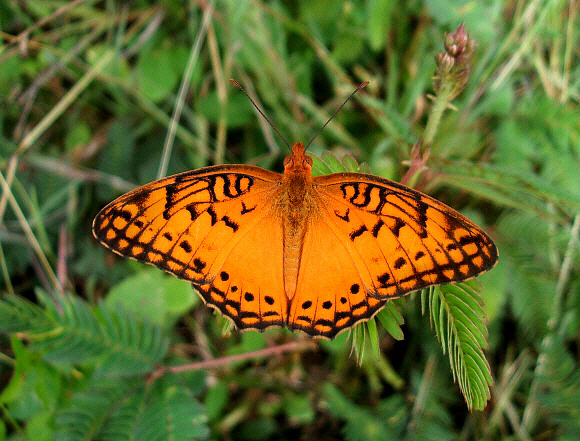 Euptoieta hegesia – Peter Bruce-Jones
Euptoieta hegesia – Peter Bruce-Jones
Introduction
The genus Euptoieta can be regarded as biologically intermediate between true Heliconiines such as Dryas, Dione and Heliconius – and the true Fritillaries such as Speyeria, Argynnis and Issoria.
Euptoieta comprises of 9 species, distributed variously from the USA to Brazil, Argentina and Chile.
Euptoieta hegesia occurs from Mexico to Brazil.
Habitats
This species is found in open habitats ranging from woodland glades and clearings to suburban gardens. It occurs at elevations between sea level and about 1000m.
Lifecycle
The eggs are pale green, and laid singly on the leaves and stems of the foodplants. These include Turnera, Passiflora ( Passifloraceae ) and Ipomoea ( Convulvulaceae ) according to locality. The larva is shiny red with silver mid-dorsal spots edged in black. It is adorned with sub-dorsal, lateral and sub-lateral black spikes; and has a red head with 2 long black spikes. The pupa is dark brown with golden eyes and small golden cones in the positions occupied by the spikes of the larva.
Adult behaviour
Both sexes are most commonly encountered when nectaring at Eupatorium, Lantana and various other flowering plants.
